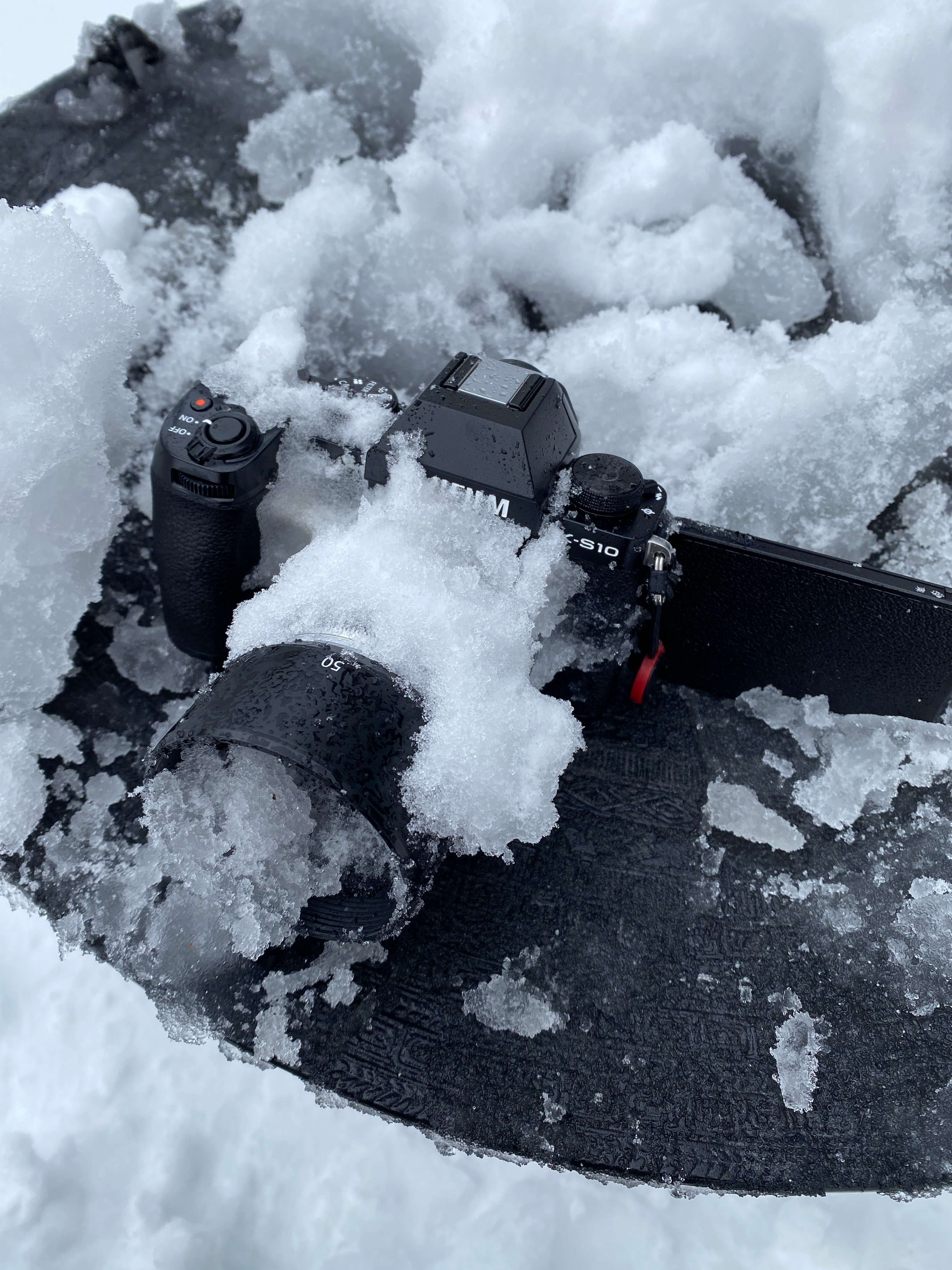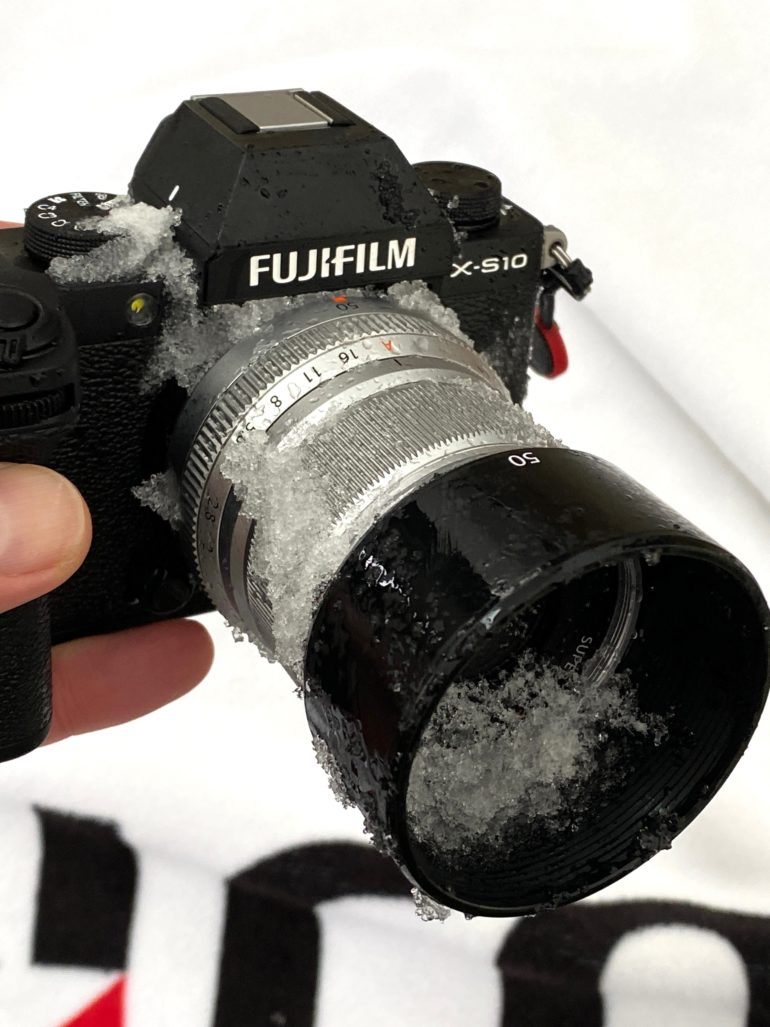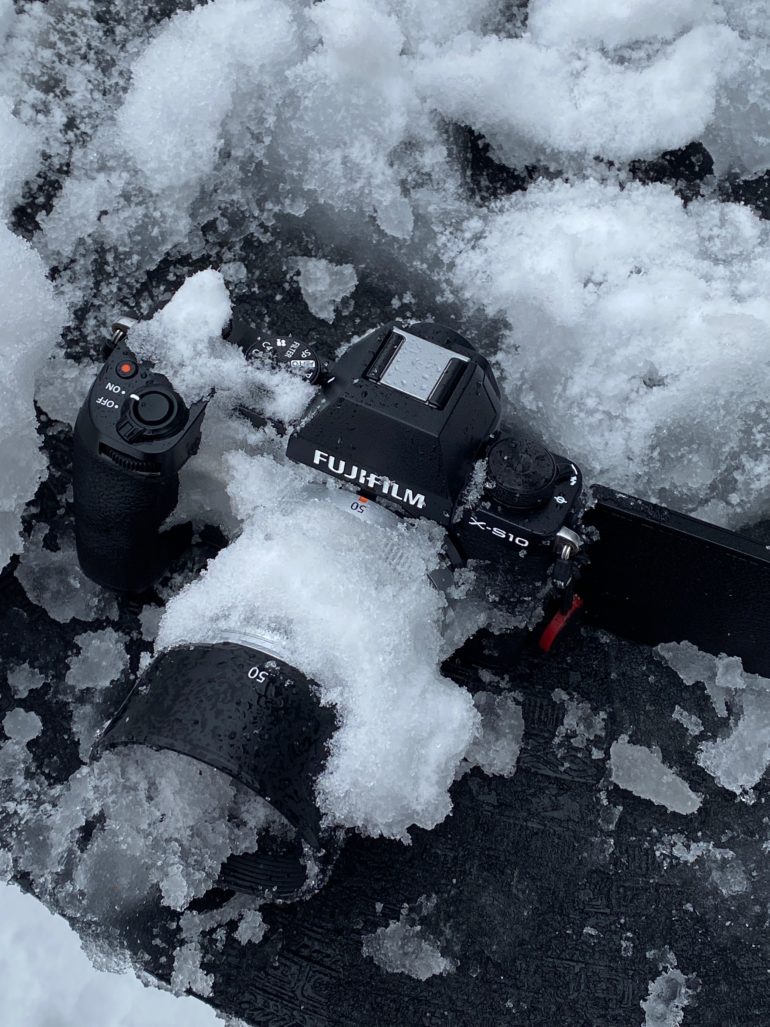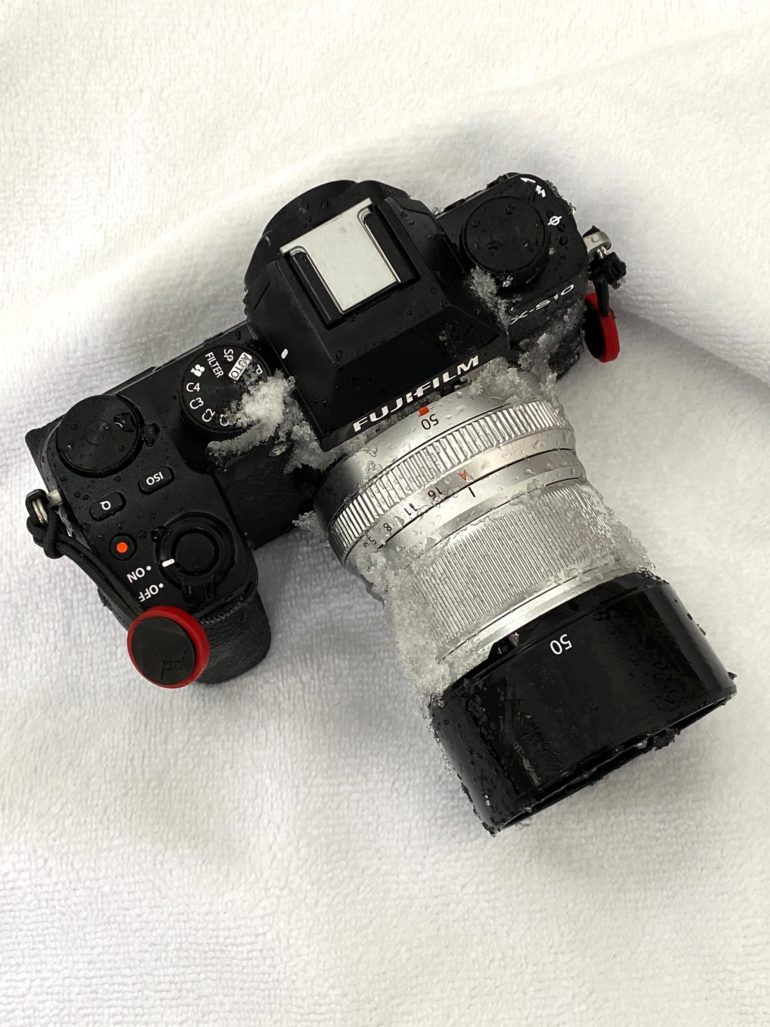We’re streaming daily on Apple Podcasts, Google Podcasts, Stitcher, Pocket Casts, and Spotify!
Our weather sealing tests tend to go one way or another with manufacturers. They’ll say that things are dust-proof, splashproof, moisture resistant, debris-resistant, etc. And when that happens, we hold them to their marketing claims. That’s what anyone should do. But every now and again, we get folks who say that the cameras or lenses would probably be fine either way. This recent test from Fujifilm’s Brandon Remler is proof of just that. In our Fujifilm XS10 review, Gear Editor Brett Day didn’t take it out into the rain or snow. The reason: It’s not claimed to be weather resistant. However, Brandon’s test outdoes even our own.
All images and the video are used with expressed permission from Brandon Remler. Please respect the fact that we got permission to share these. We always try to do what’s right, and we have for over a decade.
NYC and the surrounding areas recently experienced a very heavy snowstorm. Some places are reported to have gotten two feet of snow! So Brandon used this as a test to show off just how durable the Fujifilm XS10 is.
Brandon took the Fujifilm XS10 and put it on what looks like a table. He left it overnight during the recent blizzard. You should note that the Fujifilm 50mm f2 R WR is attached. That lens is weather resistant. In fact, Fujifilm’s WR lenses have survived major rainstorms and snow when we’ve gone out with them. For reference, the below image is what we did with the Fujifilm RF 30mm f3.5 R WR.
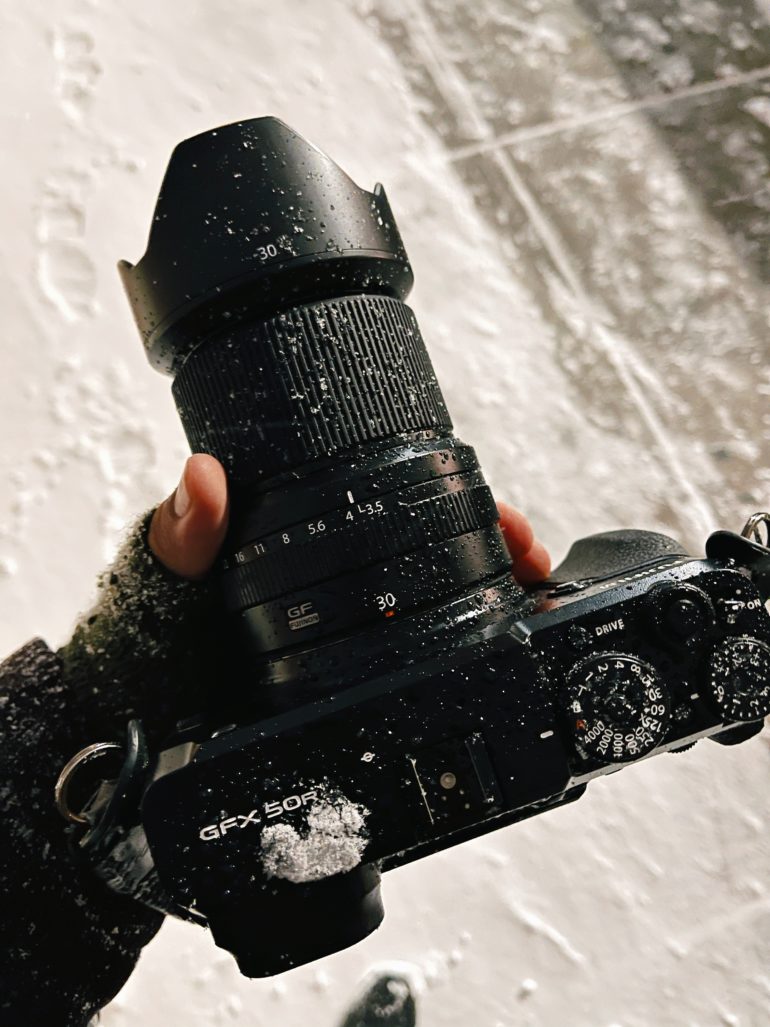
How Weather-Sealed is the Fujifilm XS10?
Brandon’s test put ours to shame, though. We’re actively using the camera and lens in the snow. But let’s take a look at what Brandon did.
Please click and watch the video below.
As you can see, the camera was completely covered in snow overnight. More than that, it was fully encompassed in ice too. Ice and snow covered the camera on the bottom, the top, front, and back. There is no protective covering on it at all. However, the hot shoe cover was in place. A hot shoe is a place where we’ve always known water can get in. But Fujifilm’s products are pretty solidly built.
Brandon uncovers the snow from the table. Then he gets to the camera. He digs the camera out, shakes it off, and powers it up. The Fujifilm XS10 turned on just fine. In fact, it kept taking photos too.
Professionally speaking, I’d never go ahead and recommend that anyone does this with their camera. It’s a great way to void your warranty. It’s not something that we’d ever say or test for either because they go against manufacturer claims. Lots of people wouldn’t dare take their cameras into the rain. But chances are that they can resist a bit of it for sure.
Further, we’d never recommend that anyone goes ahead and does this with their camera at home. But if your camera is weather-sealed, take advice from us:
- Use a hot shoe cover. Personally, I barely do because I use flashes all the time.
- Close the battery port door fully.
- Make sure you’re using a weather-sealed lens with rubber gaskets at the mount.
- Close the SD card port doors
- Close all doors for ports like HDMI, USB, etc.
- If the lens you’re using isn’t fully weather-sealed, attach a UV filter to the front of it.
The Fujifilm XS10 is available without a lens for $999.99. And for more, we encourage you to check out our full review.


